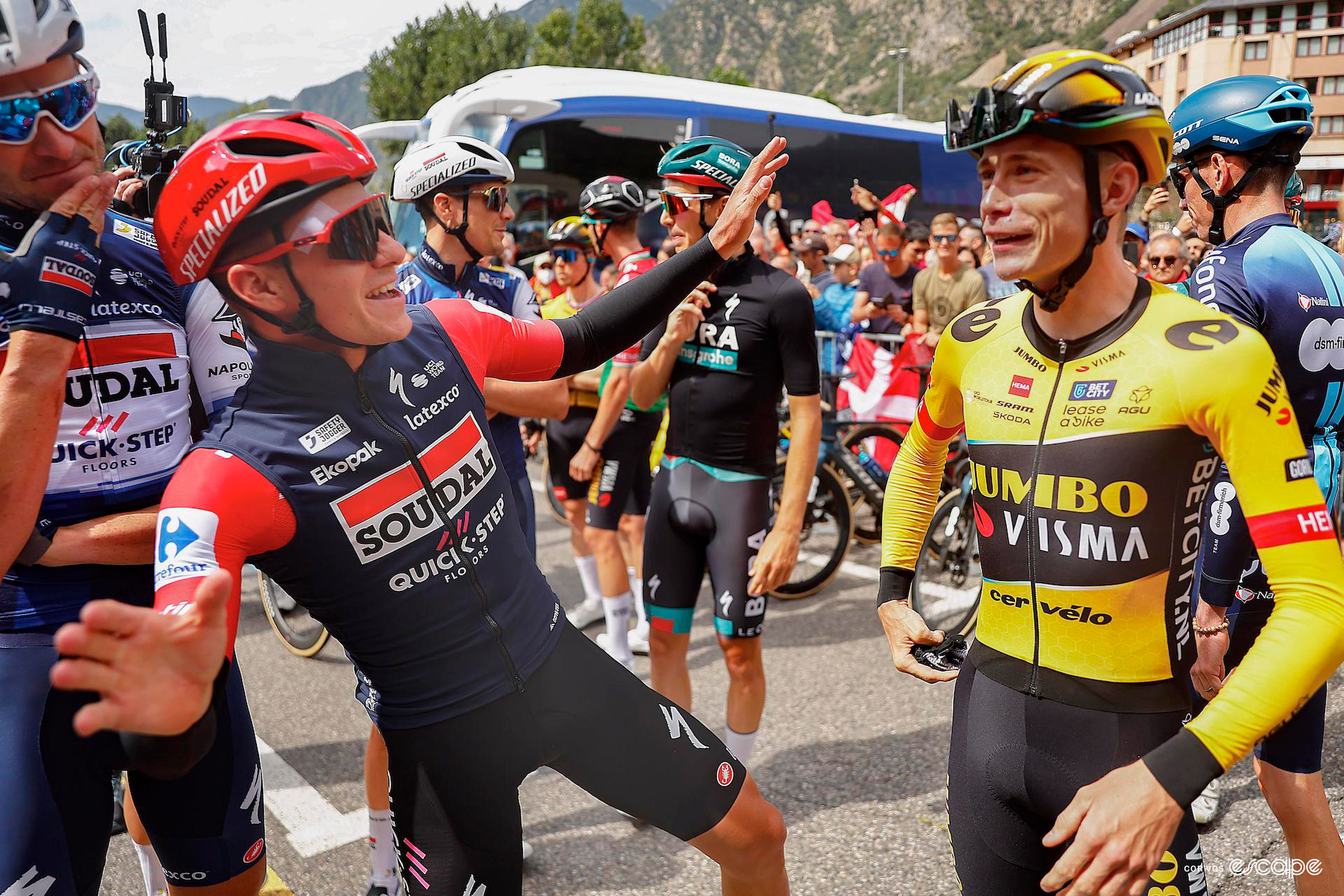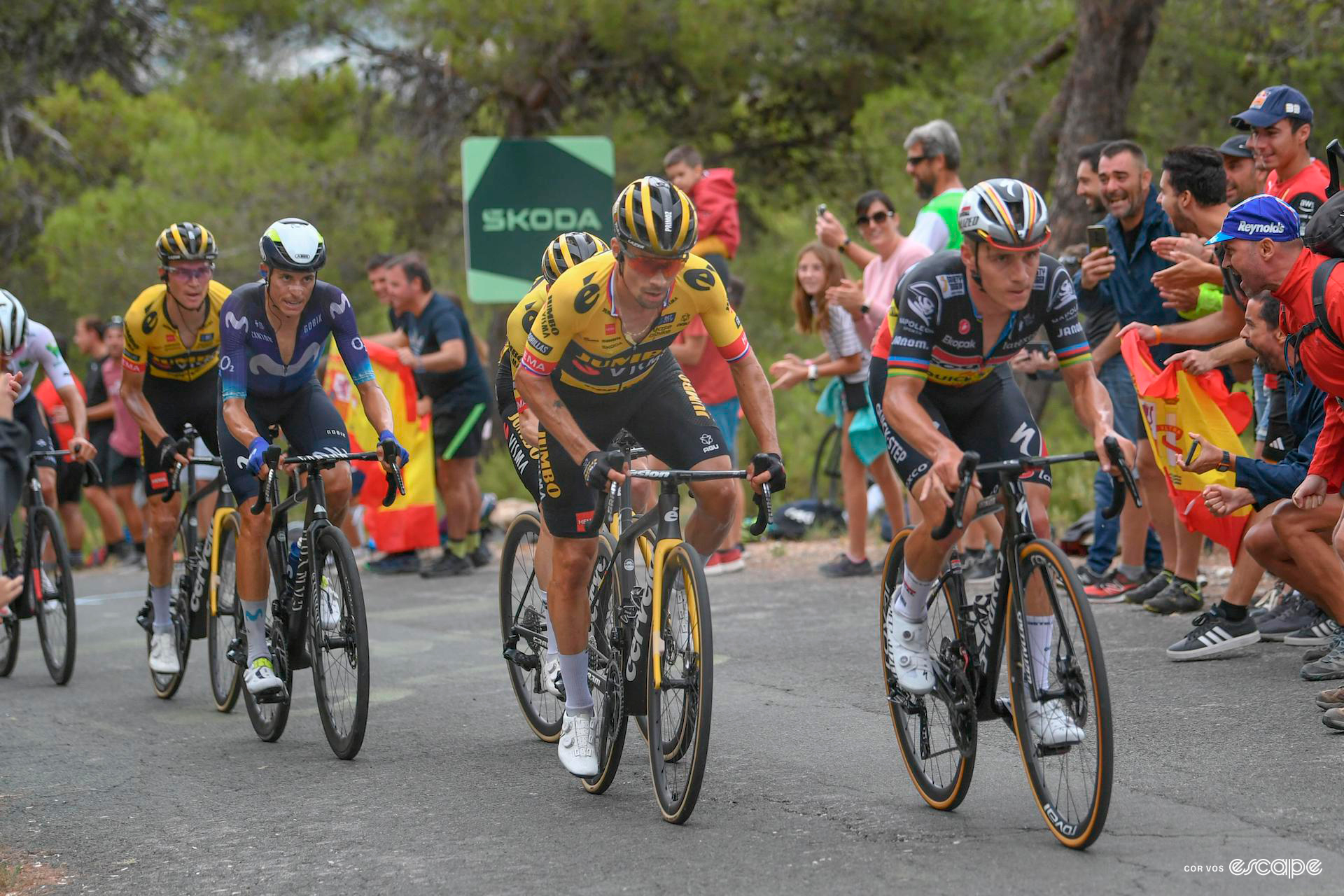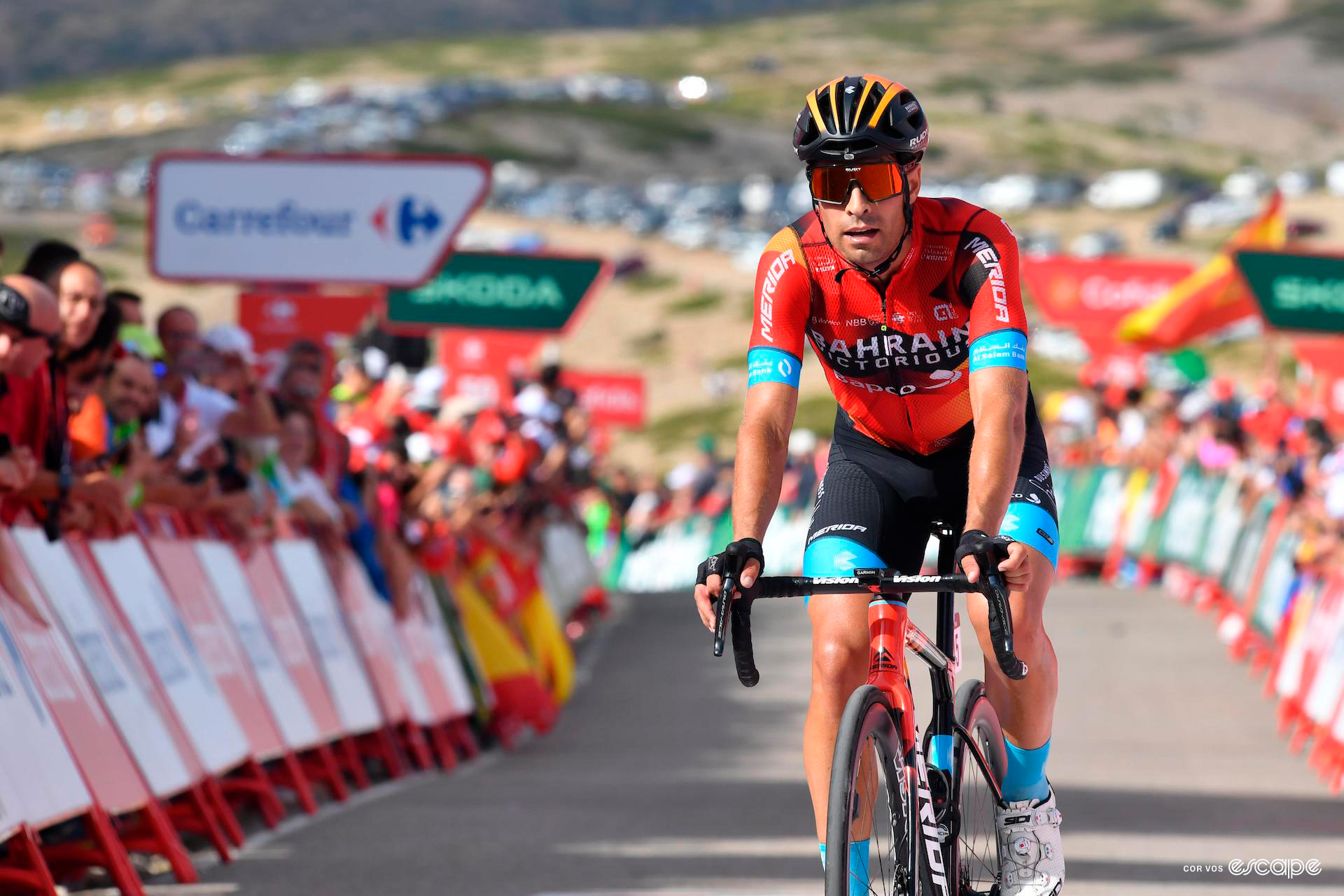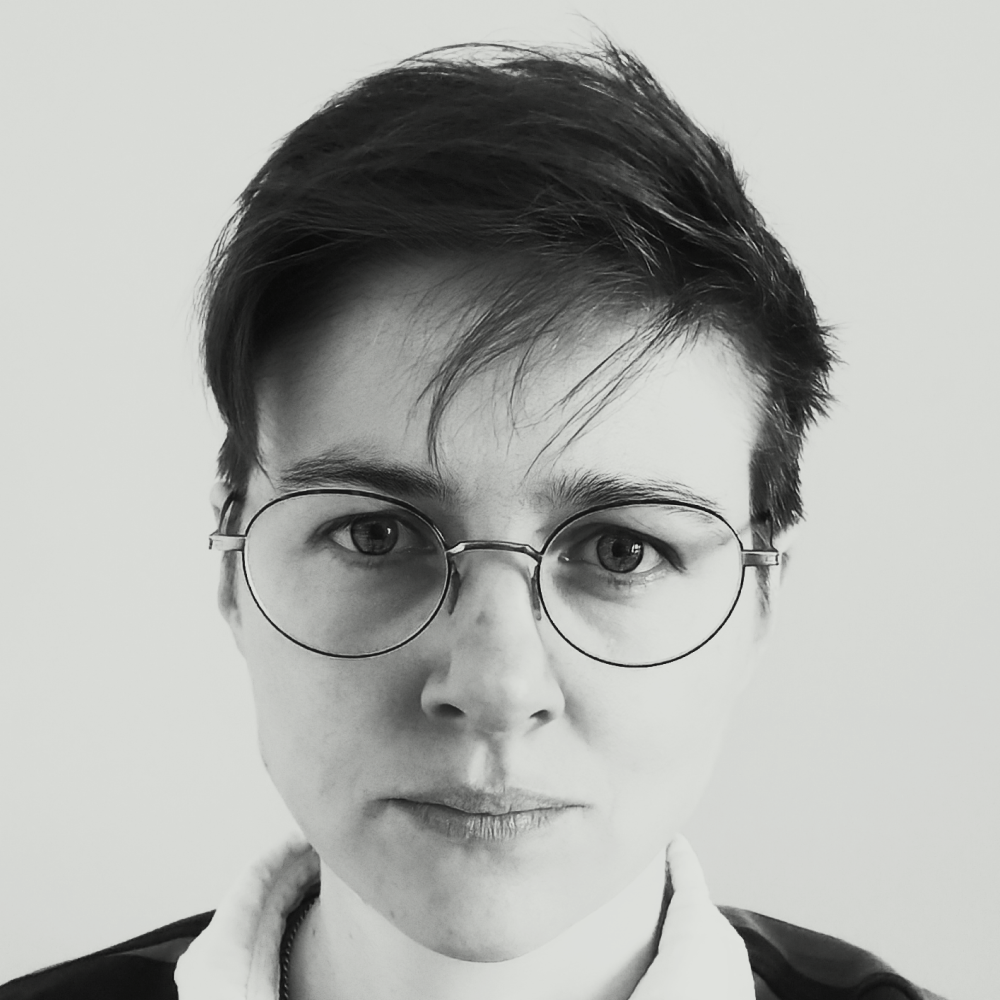The Vuelta a España has finally made it to the end of the first “week” of racing. We’re nine stages down, and boy has there been drama, not always of the good kind.
Stage 9 put a new obstacle in the path of the GC riders, inviting crosswinds into the fray and putting the favourites – and everyone else – on high alert before the start in Cartagena. What resulted was the fastest opening hour of the Vuelta so far, and by quite some margin, but in the end, it all rested on the riders’ performances on the final climb. And given that the organisers had been presented with the now all-too familiar challenge of ‘weather’ forcing a late neutralisation, there was only the exchange of a few seconds here and there in the top 10.
The GC picture after stage 9:
Loading...
N.B. There may be discrepancies in the time gaps between the official results above and what’s written below. In the hours after the race there was uncertainty as to the accuracy of the first batch of timings, and amendments may yet be made (at time of writing).
Though some have jumped up a placing or two, thanks in part to ailing riders from breakaways earlier in the race, the GC picture remains much the same as it was after stage 8’s comparable shakeup that put Sepp Kuss in red. But there’s still plenty to talk about as we look ahead to the remainder of the race.
So how are the favourites faring after nine stages?
The ‘big three’

At the top of the list of favourites still stand Remco Evenepoel, Primož Roglič and Jonas Vingegaard. A few bonus seconds here, a puncture there, a couple of stage wins shared; very little separates them – 5 and 11 seconds, in fact – after Evenepoel lost the advantage he gained in the opening TTT on stage 6 to Javalambre. On that same stage, Kuss took the win and fell just eight seconds short of the red jersey, crucially adding a third string to the Jumbo-Visma GC threat, and setting up a successful assault on red two days later.
With Kuss in the lead – doing so asking questions of his GC prospects – and Roglič and Vingegaard moving up to seventh and eighth, Jumbo-Visma looked very much in the driving seat after stage 8, on paper at least, having wielded their numerical advantage to double-decker success.
Jumbo-Visma’s strength in depth has been convincing, and yet Evenepoel has proved more physically and mentally resilient than his rivals might have hoped. The 23-year-old has often found himself isolated and surrounded by yellow and black jerseys, but he’s shown off his own brand of dominance by sitting on the front and setting a sturdy pace as if to dare the others to attack him.

So far, it’s worked out pretty well for Evenepoel, one self-proclaimed “stupid” missed opportunity on stage 8 notwithstanding: he apparently thought there were breakaway riders still up the road. He’s got a stage win and plenty of soundbites under his belt, he’s limited his losses on his jour sans and effectively weathered the Jumbo-Visma storm. Whether his tactics of the first week will be as effective in the bigger and more climb-heavy stages to come remains to be seen, but Evenepoel gets to debut his world champion’s skin suit on Tuesday, so the psychological advantage may swing back towards the Belgian before the all-important Pyrenees.
Second-tier favourites
Rather like last year, and the year before that, Enric Mas has been best of the rest, only having to hang onto the coattails of the Jumbo-Visma triad and Evenepoel’s Belgian tricolour. He’s slipped and slid here and there, but with his favoured terrain still to come and a negligible disadvantage to his key rivals, he’s not doing badly. That said, of all the GC contenders – except perhaps Kuss – the Movistar leader is likely to ship most time to the ‘top three’ in the stage 10 ITT.

Mikel Landa and Aleksandr Vlasov are also sitting in a creditable position after the second weekend, and though they too will lose some time on Tuesday, they’re unlikely to slip far out of position once the big favourites have reshuffled, and will look ahead to a strong final week, the top 5 still in reach.
Way back at the Giro, eventual winner Roglič’s main rival after Evenepoel’s untimely COVID-infected departure was Geraint Thomas, and having passed on the Tour, the veteran Welshman was given close-to top billing at his second Vuelta (first in 2015). But as is sadly so often the way, Thomas has fallen victim to a great deal of bad luck at this Grand Tour, two separate crashes injuring both knees; on stage 9, the 37-year-old added almost four minutes to his deficit which now stands at a terminal 12:34.
To add insult to injury, Ineos Grenadiers back-up or co-leader Thymen Arensman crashed out entirely on stage 7. The young Dutchman finished sixth at the Giro even after doing a lot of work for his new teammate, and was expected to take his third consecutive Grand Tour top-10 result since his breakout at last year’s Vuelta, where he won the Queen Stage.

The multiple crashes – and Egan Bernal’s potentially deliberate loss of time as he continues his comeback – leave Ineos Grenadiers firmly in stage-hunting territory for the remaining 12 stages.
Elsewhere, UAE Team Emirates also holds a reasonably solid footing with three riders in the top 10, Marc Soler currently sitting second, 43 seconds down on Kuss. At the other end are last year’s third overall Juan Ayuso and UAE sophomore João Almeida, almost inseparable in ninth and 10th. Sure Ayuso has two stage podiums and 10 seconds’ advantage, but Almeida ended stage 9 with a morale-boosting attack that gained him 14 seconds.
If they can work out the team dynamics among the three of them, and survive the high mountains without Jay Vine who crashed out on stage 6, they could yet be a threat for the podium.
Outsiders and underdogs
Lenny Martinez has been one of the standout riders of the Vuelta so far, if not the revelation of the race. A product of the Groupama-FDJ development pathway, from junior to WorldTour, the 20-year-old wore the red jersey for two days after spending stage 6 in the breakaway. He lost some time and the lead on stage 8, but he held onto the white jersey and hung on with the favourites on Sunday’s amended summit finish, losing only two seconds going into the first rest day of his debut Grand Tour.

It’s probably up for debate as to whether even Romain Bardet considered himself a GC contender coming into this race given how it’s gone for him, but if Thomas’s aim of a solid result is out of the window, Bardet’s is long gone. But with a deficit that now exceeds 25 minutes, he can well and truly throw himself at the breakaways he’s toyed with twice thus far.
Looking back at our pre-Vuelta preview, it’s perhaps encouraging to see that the only GC contenders to have convincingly fallen away are the Ineos Grenadiers pairing of Thomas and Arensman, UAE’s Vine, and distant outsiders Bardet, Damiano Caruso and Eddie Dunbar, whose crash-marred race ended on stage 5. With the top 10 all within three minutes of the red jersey, and the main favourites within 15 seconds of one another, we have the definition of a ‘finely poised’ classification going into the second week.
What did you think of this story?

